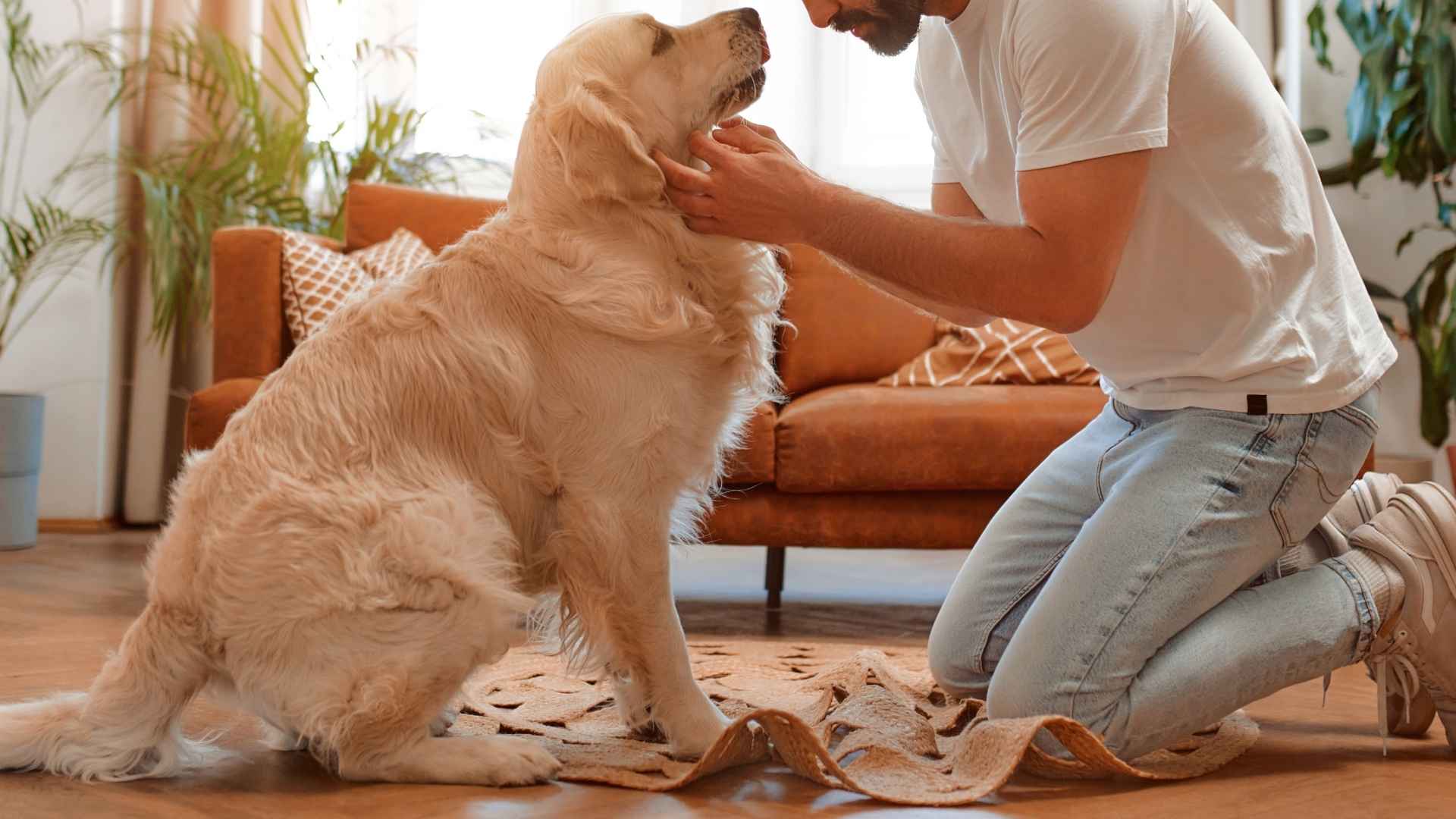Anxiety touches the lives of millions, manifesting in ways that can interfere with work, relationships, and everyday joy. For many, it’s an invisible burden that lingers beneath the surface, hard to explain and even harder to shake. While there’s no magic cure for anxiety, a growing body of research and lived experience shows that dogs can make a remarkable difference in managing its effects.
The companionship of a dog offers more than just a wagging tail, it can provide comfort, security, and even emotional balance. From their ability to sense mood shifts to simply being a soothing presence in the room, dogs have a natural way of grounding us in the moment. While nearly any dog can help reduce anxiety, some breeds have temperaments and traits that make them especially effective for emotional support.
This article explores how dogs help with anxiety and highlights the breeds that are particularly well-suited for offering comfort and companionship. Whether you’re considering a service dog or a low-key furry friend, the right canine companion may be the calming force your life needs.
Dog Breeds That Help Reduce Anxiety
1. Labrador Retriever

The Labrador Retriever has long secured its place as one of America’s most beloved dog breeds, and for good reason. Known for their intelligence and gentle nature, Labs are an ideal choice not only as loyal family companions but also as reliable service animals. Their eagerness to please, paired with a calm demeanor and sharp mind, makes them highly trainable for roles in therapy and support work.
Labs are generally friendly toward both people and other dogs, and their easygoing attitude often makes them a welcome addition to bustling households, particularly for people with anxiety. Their expressive eyes, thick “otter tail,” and playful energy reflect their naturally affectionate disposition.
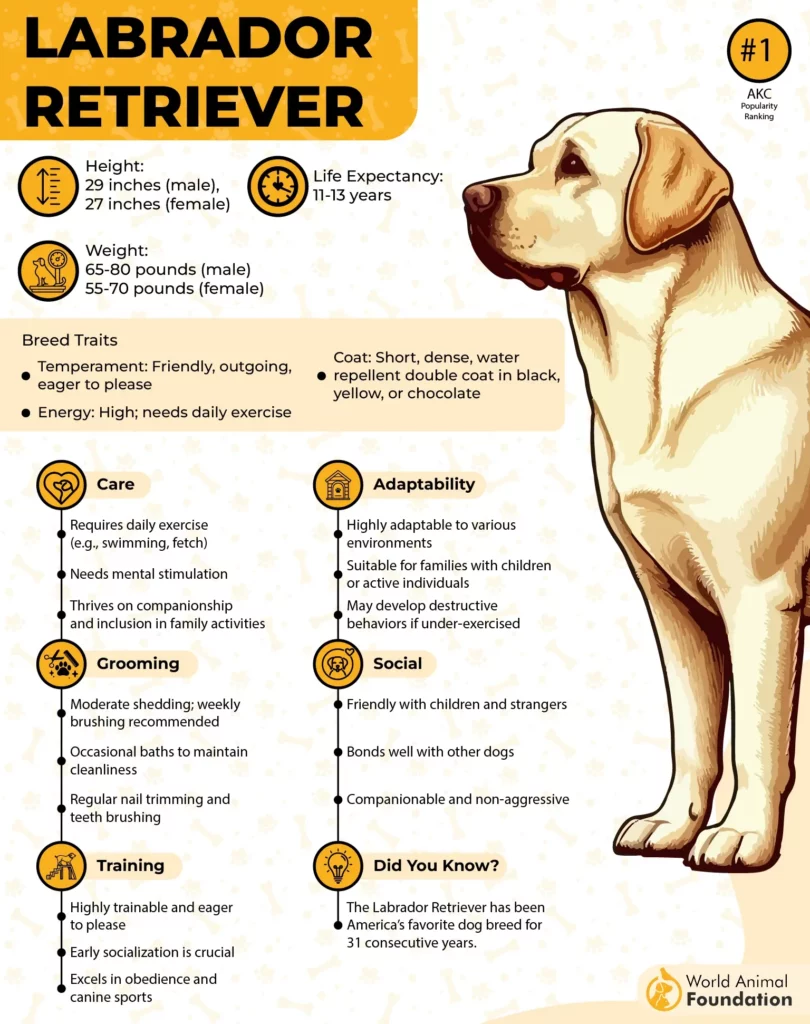
Exercise
Despite their mellow vibe indoors, Labradors have an athletic streak that shouldn’t be overlooked. The AKC describes the Labrador Retriever as energetic, sociable, and extroverted. These dogs need plenty of physical activity, such as long walks, energetic fetch sessions, and swims, to stay happy and healthy.
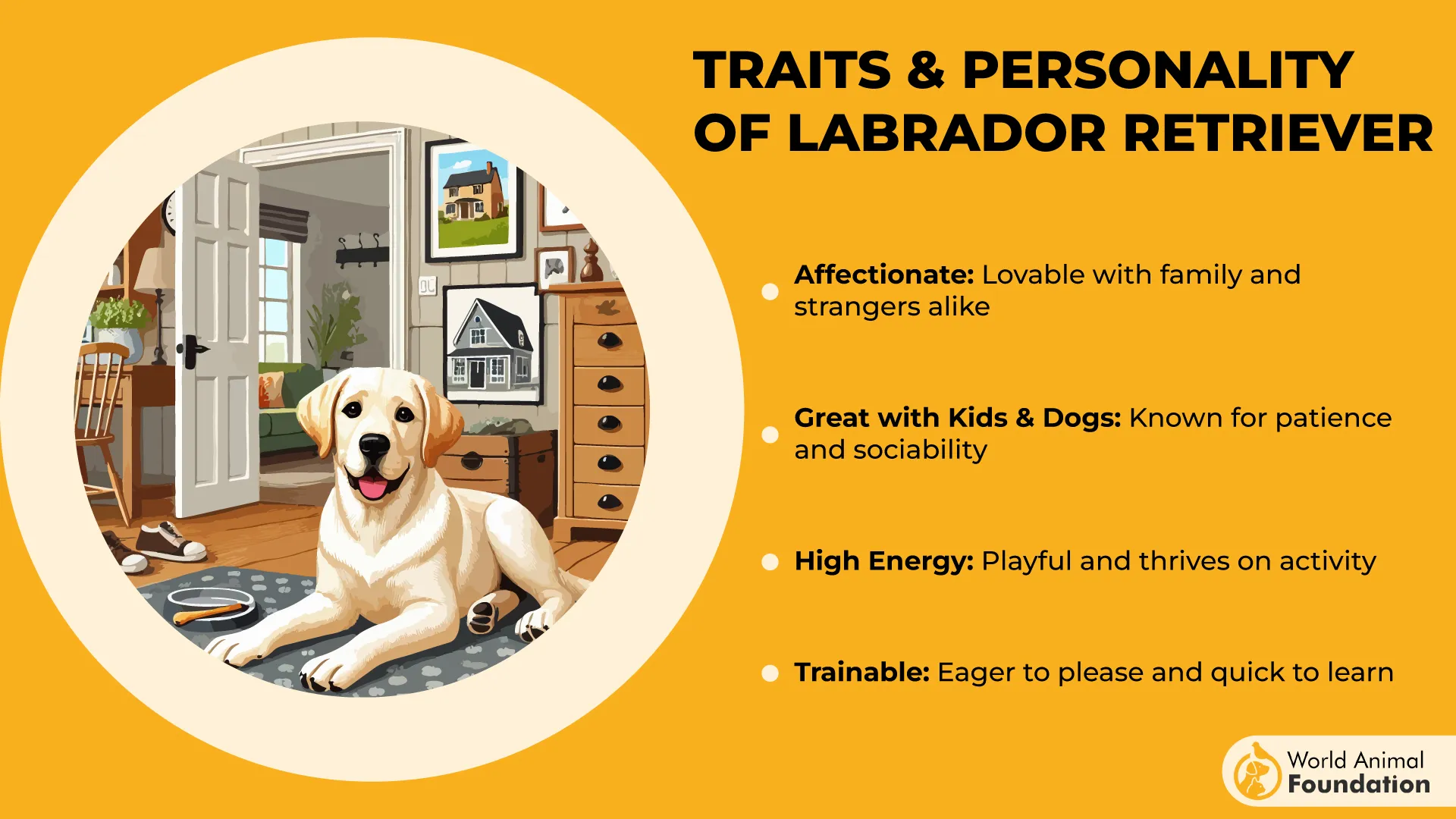
Without sufficient exercise, their high energy can turn into restlessness or even destructive behaviors. Daily engagement is key to keeping them mentally and physically balanced.
Fact:
Labradors typically weigh between 55 to 80 pounds and stand 21.5 to 24.5 inches tall at the shoulder, with a dense coat in yellow, black, or chocolate.
2. Cavalier King Charles Spaniel
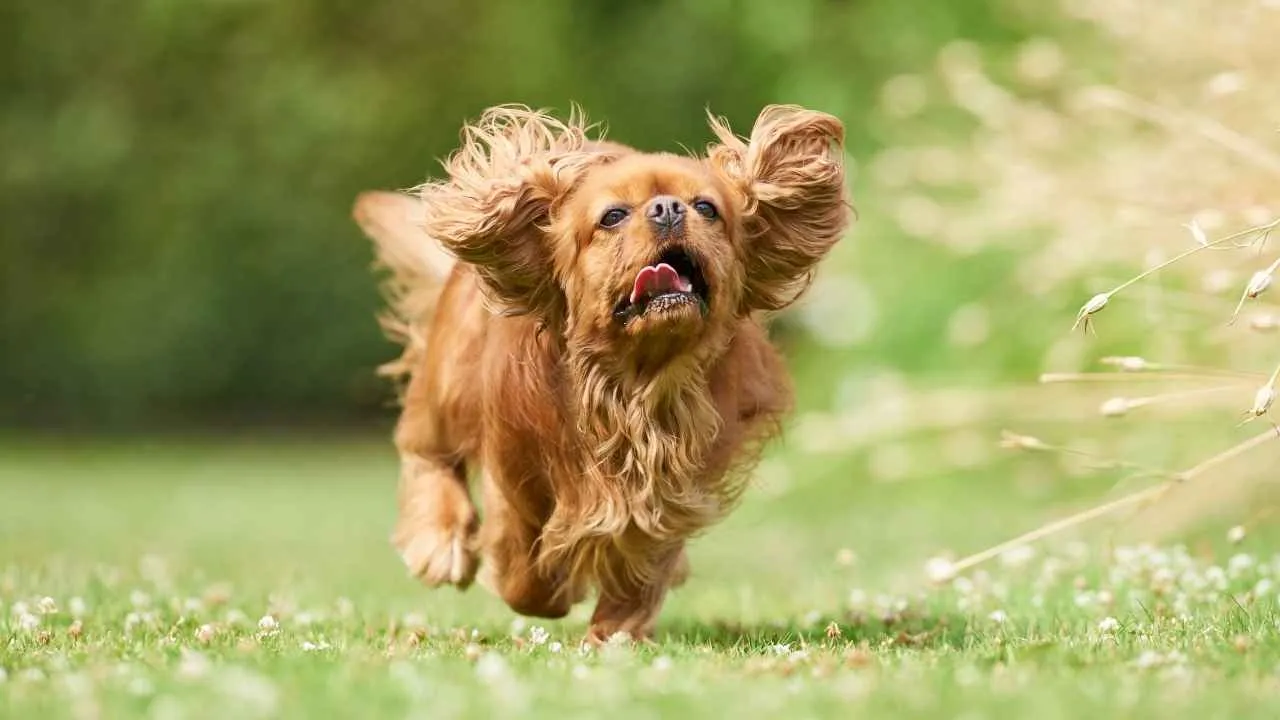
Bred from the English Toy Spaniel in the early 1900s, the Cavalier King Charles Spaniel carries centuries of charm and refinement. With roots tracing back to 17th-century England, these elegant dogs were once the companions of royalty, cherished for their affectionate demeanor and expressive eyes.
Recognized officially in 1945, they boast a slightly longer body, silky coat, and distinctive drop ears. Cavaliers are known for their sweet expression and variety of coat colors, including Blenheim, ruby, tricolor, and black and tan. Their solid build and gentle nature make them well-suited for families or individuals seeking a loving companion with a touch of nobility.

Exercise
Cavaliers adapt easily to your lifestyle, whether you’re an active walker or prefer lounging at home. While their activity level is generally low to moderate, they still benefit from daily strolls and light playtime.
Britannica states that the Cavalier King Charles Spaniel’s exercise requirements can be fulfilled with a daily walk, whether living in an apartment or a small yard. Their calm disposition and low prey drive make them excellent partners for relaxed outdoor walks and indoor cuddles alike.
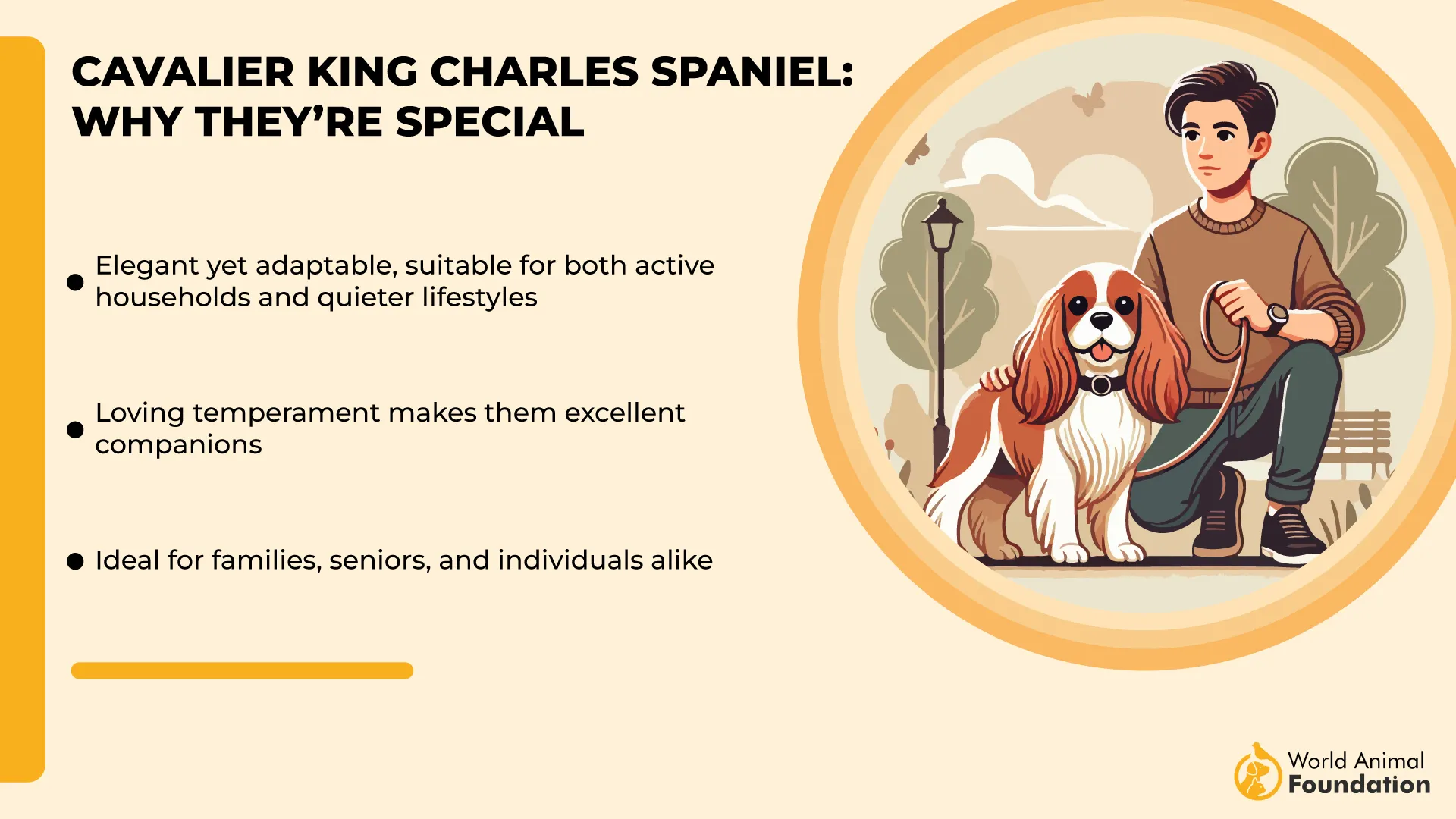
Fact:
Cavalier King Charles Spaniels typically stand 12–13 inches tall and weigh between 13–18 pounds, with a life expectancy of 12–15 years.
3. Golden Retriever
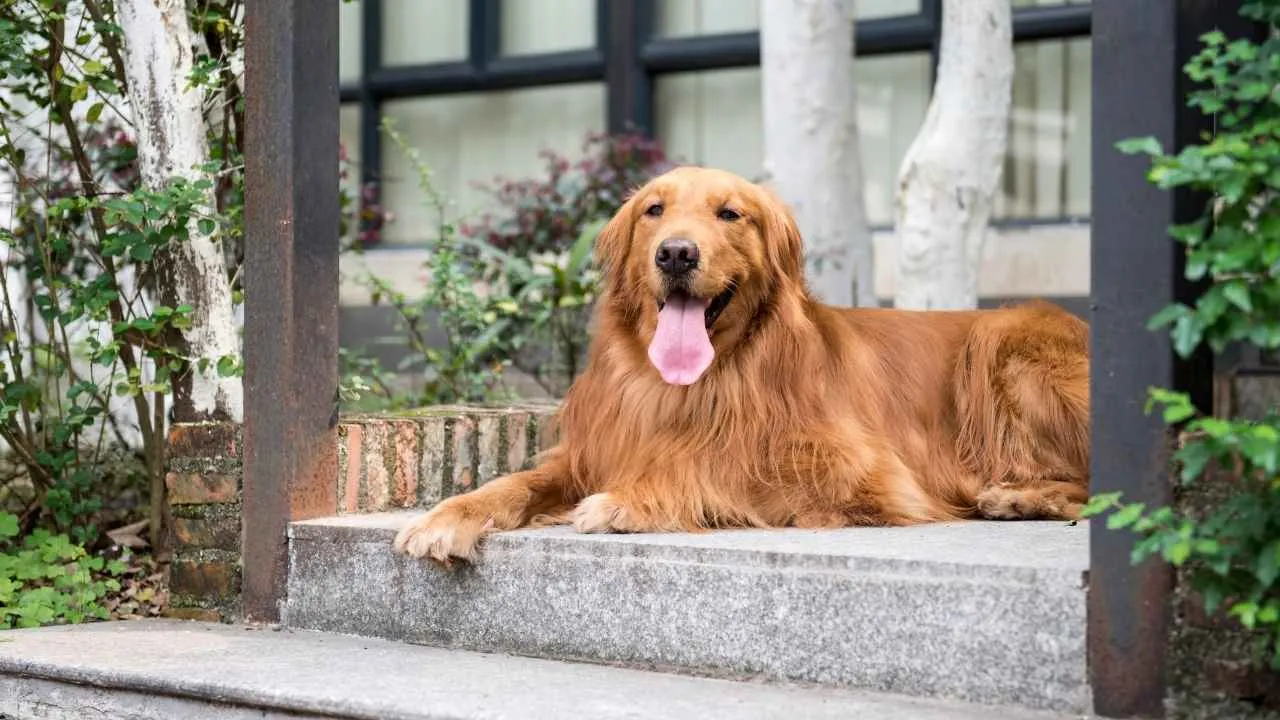
Golden Retrievers have earned their status as one of America’s favorite dog breeds thanks to their exceptional temperament and intelligence. PetMD states that Golden Retrievers maintain a moderate energy level, even as they age. They enjoy staying active with activities like running, long walks, fetching, and swimming.
Known for their unwavering devotion and friendly nature, Golden Retrievers are natural companions who adapt well to families, including households with children and other pets. Their even temper and eagerness to please make them ideal candidates for therapy and service roles, often excelling in emotional support tasks and consistently performing well on the Canine Good Citizen test.
These affectionate dogs are not only loyal and easy to train but also radiate warmth, offering comfort and companionship through both lively play and calm presence.
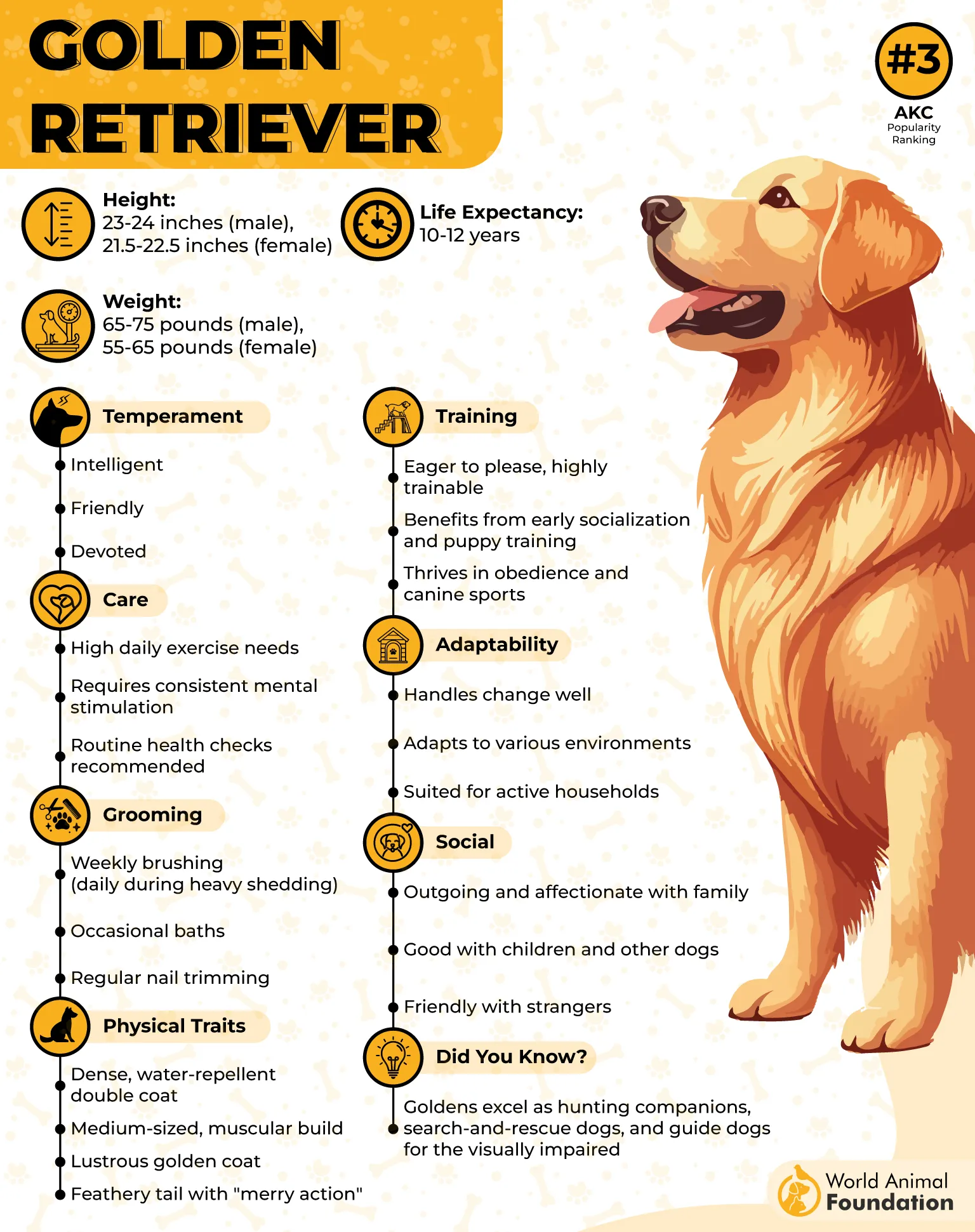
Exercise
While their temperament may be laid-back at times, these therapy dogs require regular physical activity to remain healthy and content. Daily exercise, ranging from long walks to spirited games of fetch, helps burn their moderate to high energy levels.
Without consistent activity, their playful enthusiasm can lead to restlessness or boredom. Mental stimulation through training and puzzles is equally important to satisfy their sharp minds.
Fact:
This calm breed typically stands between 21–24 inches tall and weighs 55–75 pounds, with a lifespan of 10–12 years and a high shedding factor.
4. Pug
With a royal history tracing back to ancient Chinese emperors and later European aristocracy, the Pug is a small but remarkably charismatic breed. These compact companions embody the phrase “multum in parvo”, meaning “a lot in a little.” With a square build, round expressive eyes, and a signature wrinkled brow, Pugs have mastered the art of human-like expressions that enchant owners worldwide.
Their adaptability makes them excellent house pets, whether you’re in a bustling city apartment or a quiet countryside home. Known for being charming and affectionate, Pugs thrive on companionship and love to be involved in every aspect of family life. Their easygoing temperament and loyalty make them ideal for all ages, from energetic children to retirees seeking a cozy companion.
Exercise
While Pugs aren’t high-energy dogs, they still benefit from daily moderate activity to maintain a healthy weight and prevent boredom. Short walks and indoor play sessions usually suffice, but be cautious in extreme weather, as they are sensitive to heat and cold. Their tendency to overeat also calls for structured exercise to avoid weight gain.
Fact:
Pugs typically stand 10 to 13 inches tall, weigh between 14 to 18 pounds, and are known for their high shedding despite their small size.
5. Poodle

Poodles are an elegant fusion of intelligence, sensitivity, and charm. Known for their iconic curly coats and poised demeanor, they come in three size varieties, standard, miniature, and toy, making them adaptable to a wide range of living environments. Poodles are naturally intuitive, often attuned to their owner’s emotions and quick to offer comfort when anxiety strikes.
Their keen intelligence and trainability have earned them top marks in obedience, and their hypoallergenic coats make them a strong choice for families dealing with allergies. However, those trademark curls require regular grooming, often with professional help.
Exercise
Despite their refined appearance, Poodles are active and athletic. They need consistent physical activity and mental challenges to stay balanced. Whether it’s agility training, brisk walks, or interactive games, engaging their bodies and minds is essential. Without this outlet, their energy can lead to boredom or restlessness.
Fact:
This high-energy breed is not only affectionate and trainable but also versatile, it has even been used historically as a hunting dog due to their agility and stamina.
6. Shih Tzu
The Shih Tzu is a petite breed with a royal lineage, originally bred to be a lap companion dog for Chinese emperors. Known for their affectionate nature and elegant appearance, these dogs thrive in close contact with their humans. Their long, flowing coats and expressive eyes give them a distinctive, charming look that pairs perfectly with their sweet disposition.
Shih Tzus are ideal indoor companions, especially for individuals or families living in smaller homes or apartments. They’re particularly attentive to their owners’ emotions, making them one of the best emotional support dogs. With a tendency to form strong bonds, they’re happiest nestled close to those they love.
Exercise
While they aren’t high-energy dogs, Shih Tzus do benefit from light daily activity. Short walks, indoor play, or a few minutes of fetch help keep them physically healthy and mentally engaged. Their moderate energy levels mean they won’t demand constant stimulation, but regular movement is still important to avoid weight gain and boredom.
Fact:
Shih Tzus typically weigh between 9 to 16 pounds and stand 9 to 11 inches tall, with a life expectancy of 10 to 18 years and very low shedding.
7. Yorkshire Terrier
The Yorkshire Terrier may be petite in stature, but its personality is anything but small. Originating as a tenacious ratter in English textile mills, this tiny terrier has a bold spirit and unmistakable charm. With their distinctive steel-blue and tan coats that often sweep the floor, Yorkies have become iconic for their elegant appearance and dynamic temperament.
They are fearless, bossy, and endlessly devoted, true terriers through and through. Their hypoallergenic hair, which more closely resembles human hair than fur, makes them an appealing option for allergy sufferers. However, maintaining their luxurious locks requires commitment, including daily brushing or frequent grooming.
Exercise
Though this pet dog fits easily into urban apartments and purses alike, Yorkies have a surprising amount of energy for their size. Regular walks, indoor play, and mental stimulation help keep them happy and well-behaved. They enjoy socializing and love attention, often acting as small watchdogs with their naturally alert and vocal nature.
Fact:
Yorkshire Terriers weigh no more than 7 pounds, making them a compact companion animal with a big personality and a surprisingly bold heart.
Conclusion
For anxiety sufferers, the presence of a calm, loving dog can be a profound source of relief. Scientific studies continue to affirm that pet ownership, especially of emotionally intelligent breeds, can significantly lower stress levels and even help regulate blood pressure. Whether it’s through daily companionship or specialized roles like psychiatric service dogs, certain breeds offer more than just affection, they provide critical emotional support for those struggling with anxiety, depression, or trauma.
From intuitive breeds like German Shepherds to lap-loving dogs known for their nurturing temperaments, the right dog can bring stability, comfort, and routine into a person’s life. Many of these dogs not only assist with mental health challenges but also help ease issues like separation anxiety, making them indispensable for individuals in need of constant reassurance. If you’re considering a companion for emotional support, these dogs could be the missing piece in your path toward healing and inner calm.


